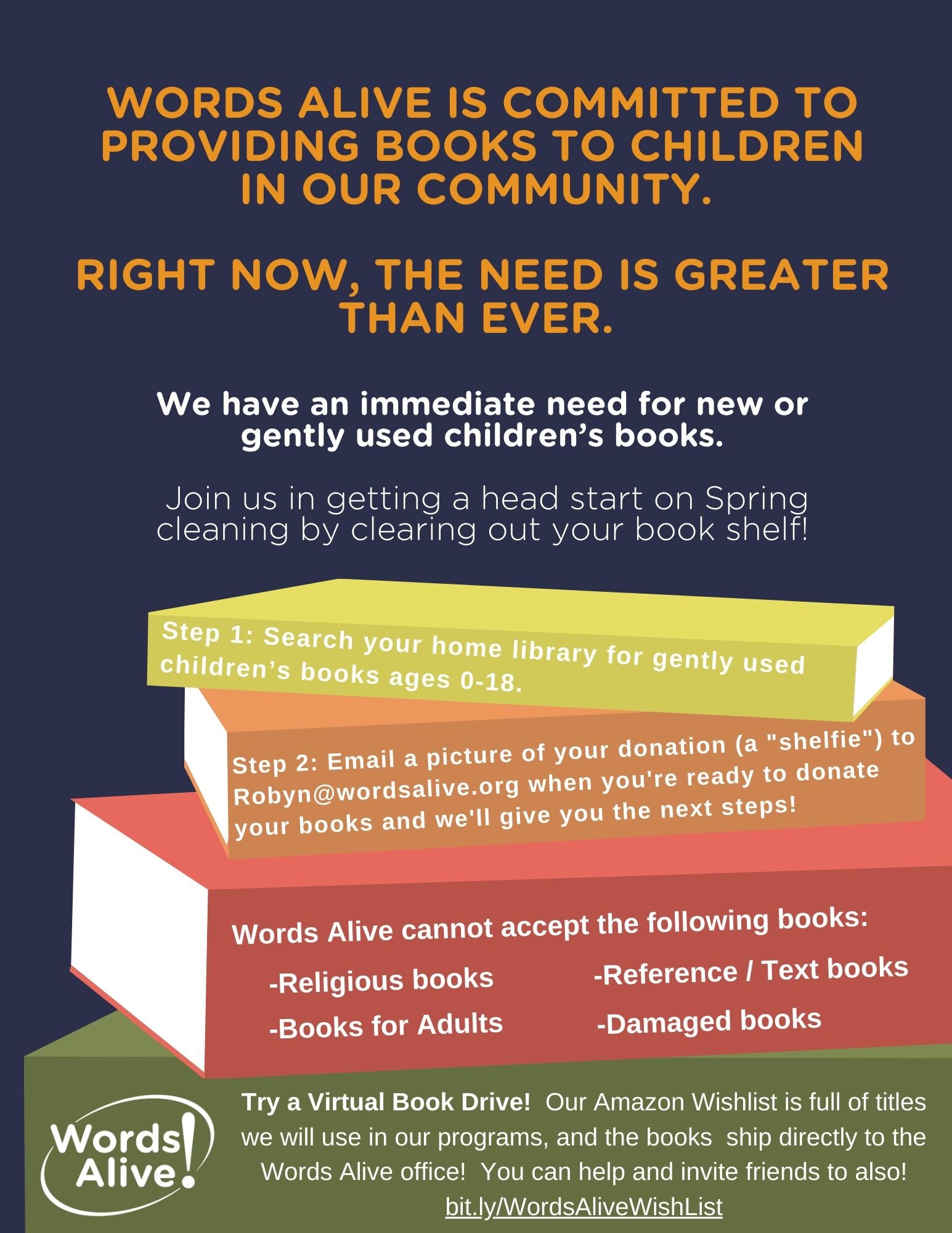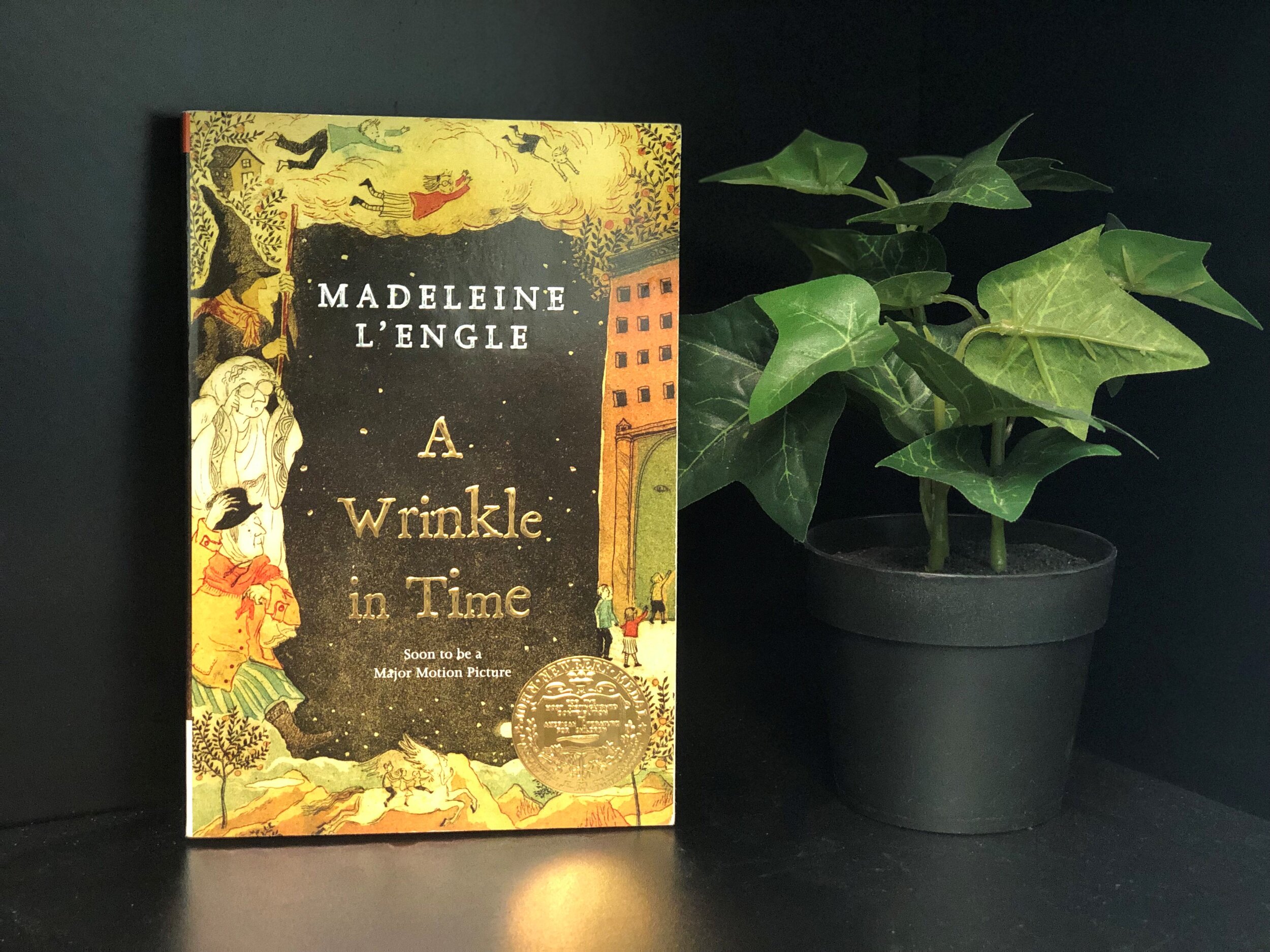Dear Words Alive Community,
I hope this note finds you safe and healthy. I think about all members of our Words Alive family daily. I am safely quarantined, with food in my fridge, writing in my book-filled office. Although ever grateful, my mind is constantly on those who don’t have enough to protect themselves or nourish their bodies and minds. As I look at my bookshelves, I am reminded of and surrounded by writers, characters, and stories that have fed my imagination...
Books connect us to ourselves. I remember reading A Tree Grows in Brooklyn in my childhood bedroom in suburban Connecticut and deeply identifying with fictional Francie as she sat on her urban fire escape, realizing I wasn’t alone in my adolescent angst.
Books connect us to each other. Each month, as I volunteered to read aloud to Words Alive’s preschool students, I heard “the Words Alive lady is here” roaring through the classroom. The books I read not only connected me with the students, but also the students to letters, words, and concepts.
Books connect us to worlds, thoughts, and places we might never otherwise see. For so many of the youth we have reached over the years, their neighborhoods might be as far as they travel. The stories we share connect them with forests and mountains, with New York and Newfoundland, and with new concepts and ideas they haven’t yet imagined.
At Words Alive, for more than 20 years, books have been connecting us to those who need it most. In the earliest days of Words Alive’s Adolescent Book Group, long before we had metrics and evaluations proving our impact, we wondered if our discussions held value for the students and their teachers. At the end of an early session at our first school, one of the students, a pregnant and homeless 9th grader, snapped her book shut and announced, “Well, that is the first book I ever finished.” That is when we knew we were on the right track.
In the ensuing years, our reach expanded exponentially. We built effective programs, leveraged our knowledge, and broadened our footprint. As of early March 2020, we were serving more than 5,000 students a month in classrooms in San Diego and Orange counties.
Now, merely weeks after the emergence of COVID-19, students, teachers, and families in all 50 states - and even some countries around the world - have come to rely on Words Alive’s ability to help them open opportunities to life success by inspiring a commitment to reading. In that time period, more than 12,000 people have come to Words Alive for resources and support to help children and teens cope with, navigate, and eventually recover from this tragic upending of their young lives.
Our initial vision, one that was articulated at our first planning meeting more than two decades ago, was that we would create resources that would help a teacher in a small classroom in the middle of our country show her students how to connect to stories. Now, that is happening, over and over, each and every day. It is happening in the virtual classroom of the first-grade teacher in Boston who has embedded our daily story time into her curriculum. It is happening in Las Vegas where an elementary special education teacher is integrating our content into her co-teachers’ virtual classrooms to motivate students and complement district-issued packets. The list goes on and on.
Next Tuesday, May 5, is Giving Tuesday Now, a new global day of giving as an emergency response to COVID-19. You will, no doubt, receive many requests from worthy causes. When it is time for you to determine your gifts, we hope you will take a moment to think about how and where books connect you. We hope you will join us, and the teacher in Boston, and the teenager about to complete her first book, in building a stronger community of readers.
To invest in Words Alive and our future readers, please click here to donate today.
Thank you for your interest, involvement, and support.
Stay safe. Stay healthy.
Leslye Winkelman Lyons
Words Alive Founder, Board Member Emeritus




























